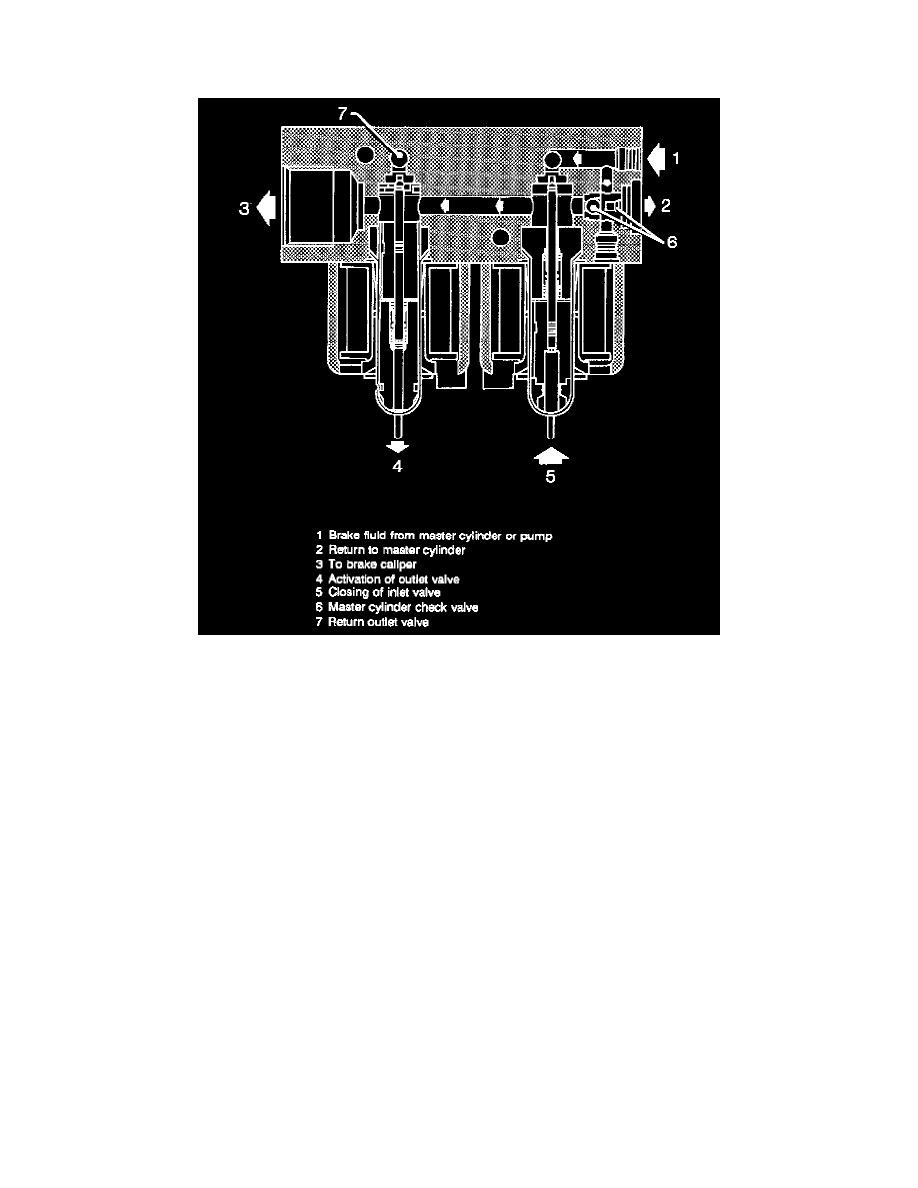9000 Hatchback L4-2290cc 2.3L DOHC Turbo EFI (1994)

Hydraulic Control Assembly - Antilock Brakes: Description and Operation
Hydraulic Unit
The valve block, which forms an integral unit with the hydraulic unit, modulates the brake pressure to the wheels during Antilock Brake System (ABS)
-controlled braking.
There are eight solenoid valves in the block: four inlet valves and four outlet valves. There are two inlet and two outlet valves for each circuit, which
means one inlet and one outlet valve per wheel. In the rest position (brakes oft), the inlet valves are open and the outlet valves closed.
When the Electronic Control Unit (ECU) senses that a wheel is being retarded too much, it modulates the brake pressure to the wheel in three phases:
Phase 1
Closes the inlet valve. This prevents pressure being increased in the circuit to the wheel brake and allows brake fluid to flow upstream of the inlet
valve for use in phase 3.
Phase 2
Opens the outlet valve to release the pressure, thereby causing the speed of rotation of the wheel to increase.
Phase 3
Closes the outlet valve and opens the inlet valve, reducing the speed of rotation of the wheel. The "used" fluid is replaced by fluid supplied via the
pump. The pump also supplies the master cylinder with fluid so that the pedal returns to its original position.
The pump runs until the travel sensor has returned to its original position when braking with activated ABS took place.
Phases 2 and 3 are repeated until the brake pedal is released or sufficient adhesion between the tire and road surface is regained.
To ensure smooth braking, the valves open and close up to twelve times a second per wheel. In the event of a break in circuit continuity or a short circuit
occurring, the valves will revert to their deenergized position, making conventional braking possible without ABS modulation.
